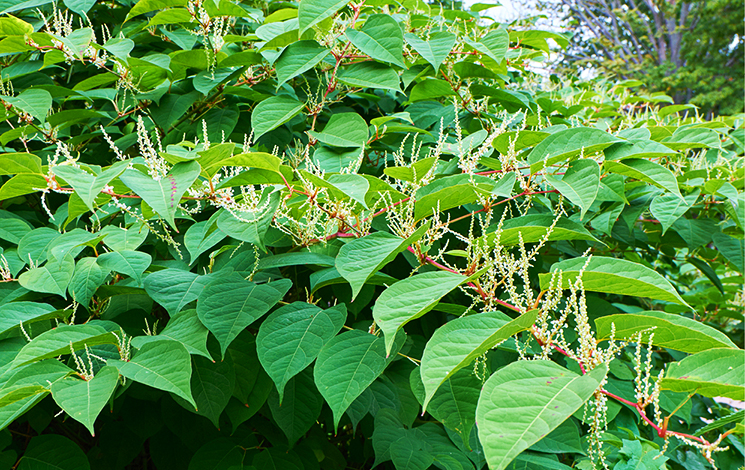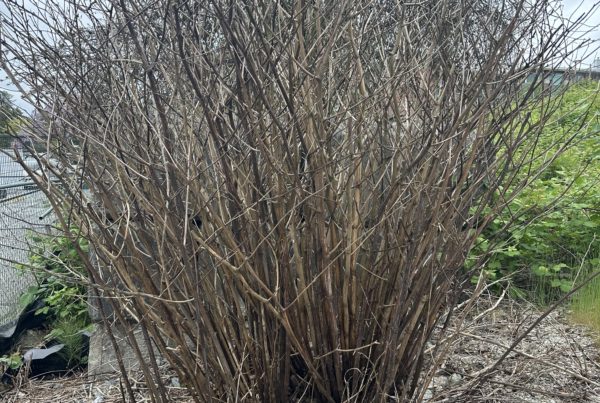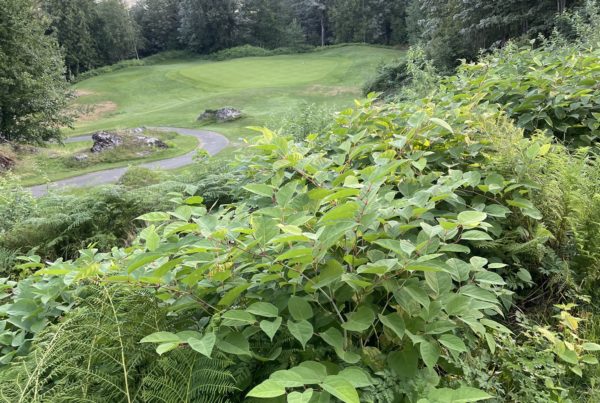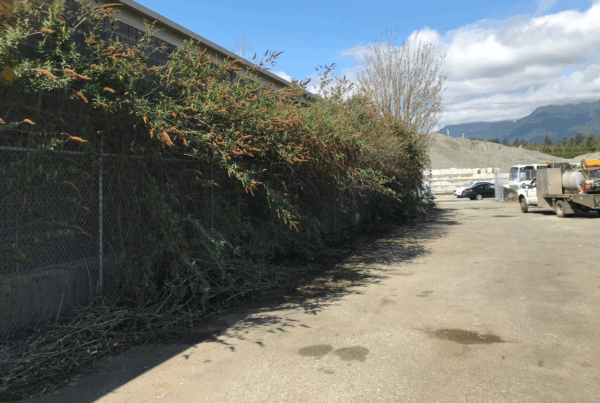Hopefully in a newspaper or internet article, not through a municipal notice that its on your site!
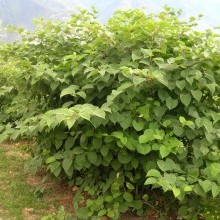 Knotweeds (Polygonum spp.) are invasive perennials, with four species found in British Columbia which are Japanese knotweed (Fallopia japonica), Bohemian knotweed (Fallopia x bohemica), Giant knotweed (Fallopia sachalenensis), and Himalayan knotweed (Polygonum polystachyum). How invasive? The International Union for the Conservation of Nature has it on their top 100 invasive species list. Knotweed is listed as noxious under the BC Weed Control Act. In the UK, where it was introduced earlier, it is estimated that Knotweed has caused $3 billion in damage. It can destroy concrete foundations and asphalt paving. In the UK many banks and insurance companies will not insure or mortgage properties with Knotweed.
Knotweeds (Polygonum spp.) are invasive perennials, with four species found in British Columbia which are Japanese knotweed (Fallopia japonica), Bohemian knotweed (Fallopia x bohemica), Giant knotweed (Fallopia sachalenensis), and Himalayan knotweed (Polygonum polystachyum). How invasive? The International Union for the Conservation of Nature has it on their top 100 invasive species list. Knotweed is listed as noxious under the BC Weed Control Act. In the UK, where it was introduced earlier, it is estimated that Knotweed has caused $3 billion in damage. It can destroy concrete foundations and asphalt paving. In the UK many banks and insurance companies will not insure or mortgage properties with Knotweed.
Knotweed usually thrives in moist soil like ditches, low-lying areas, irrigation canals and along stream banks, but they are adaptive and will grow in a wide variety of soils. Knotweed spread rapidly through their root systems that may extend up to 20 metres laterally and up to a depth of 3 metres. A piece of root or stem .7 grams is large is enough for the plant to reproduce, so it is imperative that the plant is not cut, moved or disturbed. The Bohemian variety also produces viable, wind dispersed seeds. Due to the extremely large root mass the only effective control is by chemical applications. Expect multi-year applications to eradicate the Knotweed.
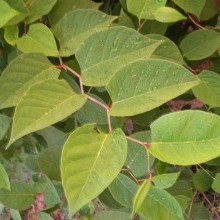 Knotweeds have small white-green flowers that grow in showy, plume-like, branched clusters along the stem and leaf joints. Hollow stems stand upright and are bamboo-like with reddish-brown speckles, depending on the species, they grow from 1 – 5 M tall. Leaves are heart or triangular-shaped on all species except Himalayan, which are elongated and tapered. Stems grow 1-5 metres in height at maturity, with leaves 8-10 centimetres wide and 15 centimetres in length. Giant knotweed leaves are generally twice the size of the other 3 species. A distinguishing feature of Japanese knotweed is the zigzag pattern in which leaves are arranged along the plant’s arching stems. Knotweed emerges in early spring and produces large leaves that can shade out other plant species. They threaten biodiversity and disrupt the food chain by reducing available habitat and increasing soil erosion.
Knotweeds have small white-green flowers that grow in showy, plume-like, branched clusters along the stem and leaf joints. Hollow stems stand upright and are bamboo-like with reddish-brown speckles, depending on the species, they grow from 1 – 5 M tall. Leaves are heart or triangular-shaped on all species except Himalayan, which are elongated and tapered. Stems grow 1-5 metres in height at maturity, with leaves 8-10 centimetres wide and 15 centimetres in length. Giant knotweed leaves are generally twice the size of the other 3 species. A distinguishing feature of Japanese knotweed is the zigzag pattern in which leaves are arranged along the plant’s arching stems. Knotweed emerges in early spring and produces large leaves that can shade out other plant species. They threaten biodiversity and disrupt the food chain by reducing available habitat and increasing soil erosion.
If you suspect you have Knotweed on your property contact a certified application company and have the plant properly identified. If it is knotweed, a treatment plan should be developed. Do not remove the plants yourself. The risk of spreading it through small segments of any part of the plant is high, either on your property or to others through the plant‘s disposal. Also, the possibility of removing all parts of the plant are very low as the roots can be 3M deep or 20M laterally. Digging can also produce a rapid growth response from the plants.
If you have received a municipal notice or a stop work notice due to knotweed you must contact a certified application company. The city will require a treatment plan and progress reports from a certified application company.


